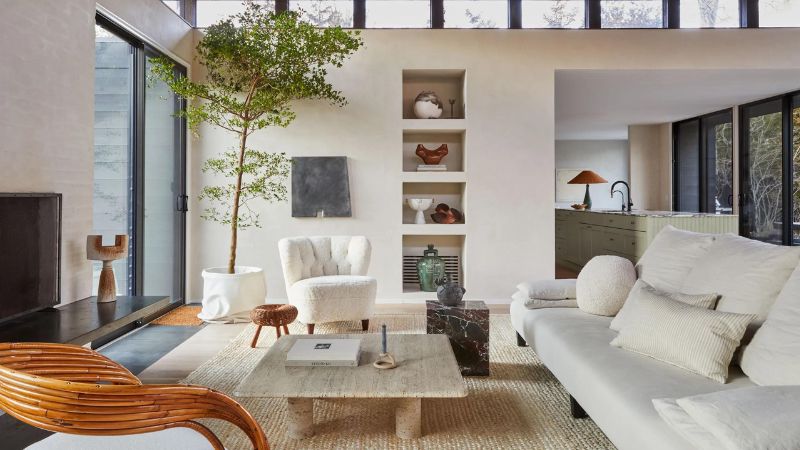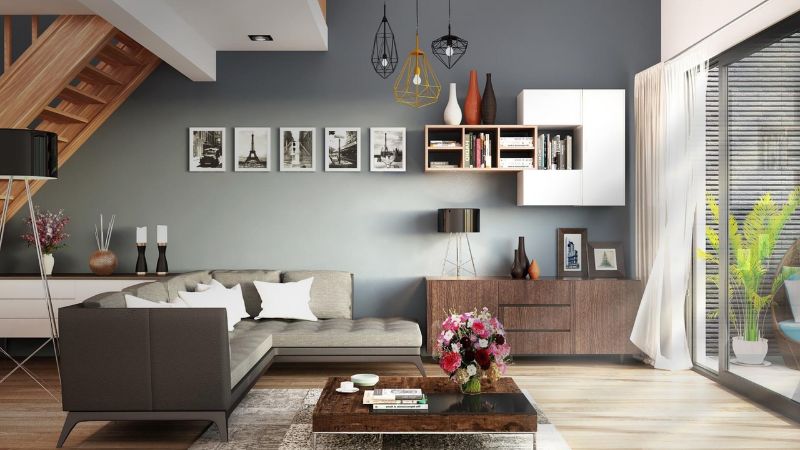Starting an interior design project is an exciting undertaking that offers a plethora of opportunities to turn your living areas into expressions of your individuality and sense of style. However, navigating through potential pitfalls is crucial to achieving a harmonious and functional home environment. From mismatched color schemes to neglecting the importance of lighting, each decision plays a pivotal role in shaping the ambiance and usability of your space. By understanding these common interior design mistakes and how to sidestep them, you can ensure your home exudes elegance and comfort while remaining a practical sanctuary for everyday life. Let’s explore the top 10 pitfalls to avoid to achieve stunning and cohesive interiors that resonate with your vision.
Interior Design Mistakes To Avoid
1. Ignoring the Importance of Lighting

Effective lighting is fundamental in interior design, impacting both functionality and ambiance. Many overlook this aspect, leading to poorly lit spaces that feel dull or cramped. To avoid this mistake, opt for a layered lighting approach: combine ambient lighting for overall illumination, task lighting for specific activities, and accent lighting to highlight architectural features or artwork. Natural light is also crucial; maximize it with strategic window treatments and mirrors to amplify brightness. When selecting light fixtures and bulbs, take the room’s purpose and mood into account to create a well-balanced and welcoming ambiance.
Also Read:- Color Schemes For Modern Interior Design
2. Mismatched Color Schemes
Color harmony is essential for a cohesive design but can easily be disrupted by mismatched colors. Avoid clashing hues by selecting a cohesive color palette. Start with a primary color and complement it with shades that harmonize or contrast in a deliberate manner. Utilize color theory to understand how different hues affect mood and perception; for example, cool tones like blues and greens create a calming atmosphere, while warm tones like reds and oranges add vibrancy. Test colors in various lighting conditions and consider the room’s size and function to ensure a balanced and pleasing aesthetic.
3. Overlooking Scale and Proportion
Scale and proportion are critical elements that influence the visual balance and functionality of a space. While tiny objects can give a space a barren, disorganized feeling, oversized ones can overpower a space. Measure your space carefully and select furniture that complements its proportions. Ensure that pieces are appropriately scaled to fit the room without overcrowding or leaving empty spaces. Balance larger items with smaller accents to create a harmonious composition that enhances the room’s overall appeal and usability.
4. Neglecting to Create a Focal Point
Every well-designed room should have a focal point that draws the eye and anchors the space. Whether it’s a striking piece of artwork, a statement furniture item, or a dramatic architectural feature like a fireplace, a focal point adds visual interest and coherence to the room. Avoid the mistake of scattering focus by having multiple competing focal points. Instead, highlight one dominant element and arrange other furnishings and decor to complement and enhance its prominence. This creates a cohesive design narrative and guides the viewer’s gaze throughout the space.
5. Too Many Decorative Accessories
While accessories can personalize a space and add character, over-accessorizing can lead to visual clutter and overwhelm the room. Avoid this mistake by curating a collection of meaningful accessories that enhance rather than detract from the overall design. Choose items that complement the room’s style and color palette while serving a functional or aesthetic purpose. Arrange accessories thoughtfully, using them to highlight focal points or create visual interest in specific areas. Remember, less is often more when it comes to accessorizing; prioritize quality over quantity to achieve a balanced and visually appealing interior.
6. Disregarding Room Functionality

A common pitfall in interior design is focusing solely on aesthetics without considering the practical needs of the space. Each room should serve a specific function, and its design should support and enhance that purpose. Avoid overcrowding with unnecessary furniture or decor that impedes functionality. Instead, prioritize comfort, ease of movement, and usability when planning the layout. Arrange furniture to create clear pathways and designated zones for different activities. This approach not only improves functionality but also contributes to a more organized and harmonious living environment.
7. Neglecting Proper Furniture Placement
Improper furniture placement can disrupt the flow and balance of a room, affecting both its functionality and visual appeal. Avoid placing furniture directly against walls or in the center of the room without consideration for traffic flow and interaction. Instead, create conversational groupings that encourage social interaction and enhance the room’s functionality. Consider the room’s focal points and architectural features when arranging furniture, ensuring that each piece contributes to the overall balance and harmony of the space. Try out several arrangements to determine the best configuration that enhances utility and comfort.
8. Lack of Personalization
A well-designed interior should reflect your personality and lifestyle, creating a space that feels uniquely yours. Avoid the mistake of replicating trends or imitating magazine-worthy looks without infusing your personal touch. Incorporate elements that resonate with your tastes and experiences, such as family heirlooms, meaningful artwork, or cherished collectibles. Strike a balance between classic pieces that showcase your individual tastes and style and current touches. This approach not only creates a more authentic and inviting living environment but also ensures that your home remains a reflection of who you are and what you love.
9. Ignoring the Importance of Texture
Texture is essential to interior design because it gives a space depth, visual appeal, and tactile appeal. A place that ignores texture may come out as boring and lifeless. Avoid this mistake by incorporating a variety of textures through textiles, furniture finishes, and decor elements. Mix and match different textures, such as smooth fabrics, rough wood grains, and glossy metals, to create contrast and dimension. Consider the sensory experience of each texture and how it contributes to the room’s overall ambiance and comfort. In addition to improving the space’s tactile feel, this tactile technique enriches its visual appeal.
10. Rushing the Design Process

One of the most common mistakes in interior design is rushing through the process without careful planning and consideration. Avoid making hasty decisions by taking the time to develop a cohesive design concept. Create mood boards, gather inspiration, and consult with professionals if needed to ensure that every aspect of the design aligns with your vision and goals. Patience and attention to detail are key to achieving a well-executed design that enhances your home’s beauty and functionality for years to come.
Also Read:- Budget-Friendly Interior Design Hacks
Conclusion
Incorporating thoughtful design choices and avoiding these common pitfalls will elevate your interiors from ordinary to exceptional. You may design rooms that not only look amazing but also improve your quality of life on a daily basis by giving priority to utility, harmony, and personal style.Remember, interior design is an art form that should reflect your personality and lifestyle while fostering comfort and practicality. Take the time to plan and visualize your design concepts, ensuring each element complements the overall theme. With careful attention to detail and a mindful approach to design principles, you can transform any space into a stylish and inviting haven that stands the test of time.
FAQs
What are some common mistakes in furniture placement?
Proper furniture placement involves considering traffic flow, focal points, and room proportions. Avoid placing furniture directly against walls or clustering pieces in the center of the room. Instead, aim for a balanced arrangement that allows for easy movement and conversation.
How can I avoid over-accessorizing my space?
Over-accessorizing can clutter your space and diminish its visual appeal. Focus on a few meaningful pieces that complement your decor theme rather than overcrowding shelves and surfaces. Opt for quality over quantity to achieve a more sophisticated and cohesive look.


